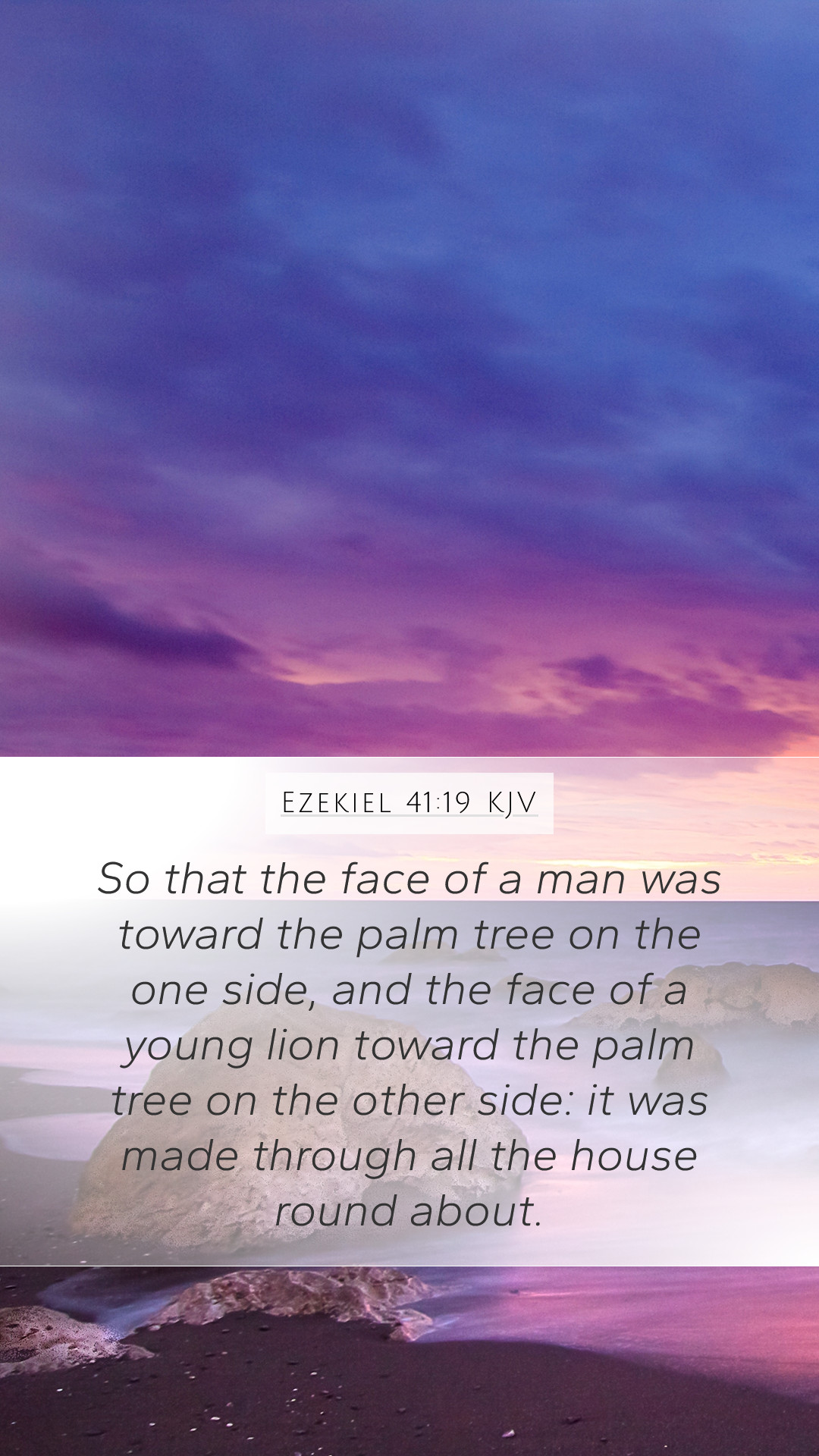Ezekiel 41:19 - Bible Verse Meaning and Commentary
The verse Ezekiel 41:19 is rich in symbolism and significance, presenting a deep insight into both the physical layout of the temple and its theological implications. This analysis draws from public domain commentaries, providing a comprehensive understanding of the verse.
Verse Context
Ezekiel 41:19 states: “The face of a man was toward the palm tree on one side, and the face of a young lion toward the palm tree on the other side: thus was the big room; the length was seventy cubits, and the breadth was forty cubits.” This verse is situated within a detailed description of the temple structure, emphasizing the intricate design and symbolic representations within it.
Key Themes in Ezekiel 41:19
- Symbolism: The imagery of a man and a lion is significant, representing various attributes of God. The man symbolizes humanity and divine wisdom, while the lion can represent strength and courage—qualities often associated with God’s majesty and authority.
- The Palm Tree: The mention of palm trees reflects the themes of victory, immortality, and peace. In ancient times, palm branches were used in celebrations, symbolizing triumph and prosperity.
- Architectural Details: The dimensions of the room (seventy cubits by forty cubits) highlight the grandeur of the temple, reflecting God’s dwelling among His people and the importance of worship in the Jewish faith.
Commentary Insights
Matthew Henry: In his commentary, Henry notes that the placements of the man and lion illustrate the dual nature of Christ, emphasizing His humanity and sovereignty. He also points out how these elements serve to inspire awe and reverence towards God.
Albert Barnes: Barnes explains that the architectural features symbolize theological truths. For example, the lion can represent the tribe of Judah, connecting to messianic prophecies, while the man reflects the Gospel's call to humanity. He emphasizes the need for Christians to recognize the representation of divinity in these symbols.
Adam Clarke: Clarke elaborates on the practical aspects of the temple's design, relating it to the worship practices of Israel. He emphasizes how such a structure was necessary for fostering a holy environment, allowing for a connection between God and His people through rituals and offerings.
Importance of Ezekiel 41:19 for Modern Readers
This verse's rich symbolism allows for varied interpretations which can aid in personal spiritual reflection and growth. Understanding Scripture in the context of its detailed imagery encourages believers to delve deeper into their faith and seek a more profound engagement with the Word of God.
- Application in Daily Life: The dual representation of man and lion encourages individuals to embody both humility and strength, reflecting the nature of Christ in their lives.
- Bible Study Insight: Reflecting on such verses during Bible study groups can foster discussions about the broader messages of the prophets and how they apply to contemporary faith challenges.
- Cultivating Reverence: The architectural descriptions encourage believers to approach God with reverence, recognizing the majesty of His presence in worship settings.
Cross References
- Revelation 5:5: Jesus is referred to as the Lion of the tribe of Judah, connecting with the lion imagery in Ezekiel.
- Isaiah 11:6: Prophetic imagery similar to Ezekiel's depicting peace and harmony under God's reign.
- 1 Kings 6:2: Description of the temple's architectural magnificence, highlighting God's dwelling among His people.
Conclusion
In summary, Ezekiel 41:19 invites readers to reflect deeply on the rich symbolism present within the Scriptures. It serves as a transformative message encouraging believers to engage in Bible study insights, enhancing their understanding of God's Word. Such passages open pathways for profound personal and communal exploration of faith, fostering collective growth in Bible study groups and individual study.


